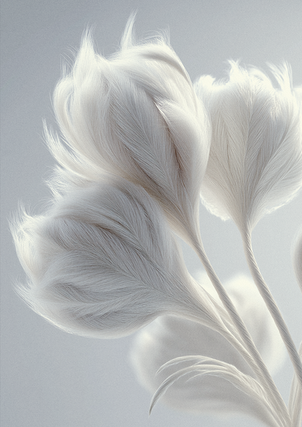YEONHO
JANG
사라진 아이들의 정원 The Children's Aftergarden, 2025
AI generated image, archival pigment print, variable dimensions
sigle-channel video, 8min(loop)
제주 신화에서 서천꽃밭은 저승과 이승의 경계에 놓인 화원으로, 어린 나이에 세상을 떠난 아이들이 꽃을 돌보는 곳으로 전해진다. 그곳의 꽃들은 현실에 존재하지 않고 설화에서만 전해지는 꽃으로, ‘멸망꽃’, ‘불붙을 꽃’, ‘뼈오를 꽃’, ‘살오를 꽃’, ‘생불 꽃’, ‘악심 꽃’, ‘오장육부 간담 꽃’, ‘울음울을 꽃’, ‘웃음웃을 꽃’, ‘피오를 꽃’ 등 각각 죽음과 소멸, 환생과 치유, 기쁨과 애도, 생명력의 회복을 은유한다. 작가는 AI로 서천꽃밭의 꽃들을 시각화하여 신화와 매체, 삶과 죽음, 실재와 상상의 경계를 탐색한다
In Jeju mythology, the Seocheon Flower Garden is a mythical garden situated on the boundary between the world of the living and the dead, where children who passed away at a young age are said to tend the flowers. These flowers do not exist in reality but are passed down only through oral tradition, with names such as the Flower of Demise¹, the Flower that Burns², the Flower that Grows Bones³, the Flower that Grows Flesh⁴, the Flower of Rebirth⁵, the Flower of Malice⁶, the Flower of the Viscera⁷, the Flower of Weeping⁸, the Flower of Laughter⁹, and the Flower that Blooms Blood¹⁰. Each embodies metaphors of death and extinction, rebirth and healing, joy and mourning, and the restoration of vitality. By visualizing the flowers of the Seocheon Garden through AI, the artist explores the boundaries between myth and media, life and death, the real and the imagined.
-
멸망꽃 (Myeolmang-kkot) – Flower of Demise
-
불붙을 꽃 (Bulbuteul-kkot) – Flower that Burns
-
뼈오를 꽃 (Ppyeooreul-kkot) – Flower that Grows Bones
-
살오를 꽃 (Saloreul-kkot) – Flower that Grows Flesh
-
생불 꽃 (Saengbul-kkot) – Flower of Rebirth
-
악심 꽃 (Aksim-kkot) – Flower of Malice
-
오장육부 간담 꽃 (Ojangyukbu Gandom-kkot) – Flower of the Viscera
-
울음울을 꽃 (Ureumul-eul-kkot) – Flower of Weeping
-
웃음웃을 꽃 (Useumuseul-kkot) – Flower of Laughter
-
피오를 꽃 (Pioreul-kkot) – Flower that Blooms Blood

















